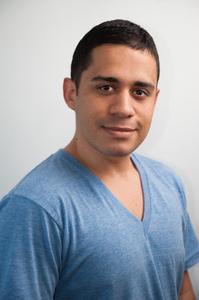ESP Biography
EDUARDO GONZALEZ-MALDONADO, Stanford Ph.D. student in Developmental Biology
|
Major: Developmental Biology College/Employer: Stanford Year of Graduation: 2015 |

|
Brief Biographical Sketch:
My name is Eduardo Gonzalez-Maldonado. I'm a 4th year Ph.D. student at Stanford. I was born and raised in Puerto Rico, where I majored in Industrial Biotechnology during college. After a summer internship in 2008 investigating the development of the nervous system in the chick embryo, I became fascinated with Embryology. I believe that the presence within a single, microscopic cell of all the information necessary to create a complex, adult animal is one of the greatest mysteries that Nature offers for our examination. The questions surrounding this mystery are endlessly expanding, and the embryo only continues to astonish humanity with its complex orchestration of growth, pattern, and form. The embryo can answer many questions about our nature and our origins, and it has very recently become amenable to complex experimentation. While the embryo is indeed complex, it is nonetheless intelligible. I love being able to convey my passion for this field while simultaneously demystifying it and making it accessible to the public. Past Classes(Clicking a class title will bring you to the course's section of the corresponding course catalog)B3130: Embryology in Splash! Fall 2013 (Nov. 02 - 03, 2013)
All animals start out as a single cell, the zygote. Embryology is the branch of science that studies the embryo: all of the stages of development between the zygote and animal's final form. This course will help answer questions such as:
-How do embryos decide where to grow a head, where to grow a tail, where to grow arms and legs, where to grow eyes, etc.?
-What do the embryos of different species of animal look like? What do they all have in common? What are the differences?
-Why do human babies grow hands while bat babies grow wings?
-Where does the embryo store all of the instructions it needs to grow and take the right shape? How does the embryo read those instructions? Can we change the instructions? What happens if we do?
-How can we study embryos? What kind of experiments can scientists do with embryos?
You will also be able to compare living and preserved embryos of different animals at different stages under the microscope. It'll be fun! :)
|
|
